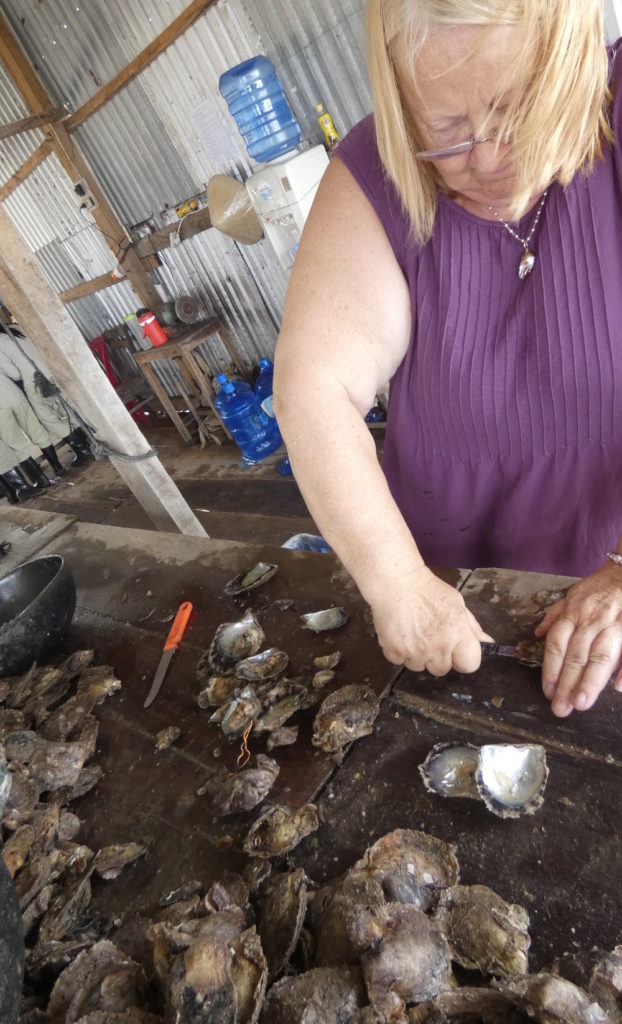Chapter nine of Pearls A Practical Guide considers Akoya pearls, where they come from and how they are farmed. Lots of information on buying.

Here I am opening akoya shells. They are easily opened, the shells are very thin and the knife cuts through the mother of pearl easily, so it isn’t a job for brute strength, unlike opening big south sea oysters.
I’m concentrating hard so I don’t cut my hand open and so I can find those tiny akoya pearls, and even any very tiny keishi.
Notice the diversity of shapes of the different shells. Most had white mother of pearl inside (as you can see from the two showing) often with a rainbow of overtones, but some had the most glorious deep gold colour
I look totally bedraggled because the temperature that day was well over 90 deg C and the humidity was around 95% so, having been in UK only a few days before my body hadn’t really adjusted yet. Farm staff wore coveralls, wellies and coolie hats (yes really!) Not so warm for them!

Now I’m inside and there’s aircon! This is the room where the decisions are made.
I was allowed to join the skilled team selecting which oysters would be donors for the next generation.
So you can see the red basket of just landed oysters. Each one is pegged open.
You pick up the oyster with the reverse opening pliers and gently remove the pearl inside. Place the pearl onto the white upturned flowerpot. If the pearl will go through the hole (which is hidden by a pearl just sitting in it) then that particular oyster is not an oyster which secretes a good amount of nacre. Rejected for the next gen. Then look closely at the pearl. How is its lustre and is the surface clean? Shiny and clean and that oyster will be a donor.

Close-up on the akoya shell. It really is very thin.

The tiny keishi found by the washing process. They will be 1-2mm

Naturally Akoya pearls come in a stunning range of colours. Until recently nearly all of them were bleached. Then farmers and wholesalers realised there was a greedy market for their subtle beauty and now good natural colour pearls are in huge demand. The colours were always there – look at the range of colours in the shell. Glorious.

Sublime to ridiculous found in one day’s production at an akoya farm. Akoya pearls can be richly gold, blue or purple, round and smooth or baroque, or even with a granulated, popcorn, rosebud surface.
Videos
Washing pearls after harvest
